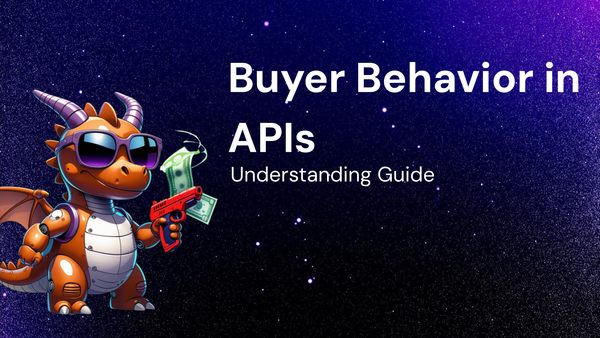Tracking Ecommerce Trends for Secret Coupon Stacking Success

Tracking Ecommerce Trends for Secret Coupon Stacking Success
In the fast-paced world of ecommerce, where consumer behavior shifts with the tide of algorithms and viral trends, savvy shoppers are constantly seeking an edge. One powerful tactic that often flies under the radar is coupon stacking, the art of combining multiple discounts to achieve significant savings. While not always explicitly allowed, many online retailers inadvertently permit it, creating opportunities for those who know where to look. However, successful coupon stacking isn't just about randomly entering codes; it's a strategic game that requires a deep understanding of current ecommerce trends and how they influence promotional strategies.
This comprehensive guide delves into the exciting world of coupon stacking, exploring how tracking ecommerce trends can unlock hidden savings and maximize your discount potential. We'll cover everything from identifying the key trends shaping online retail to the practical techniques for finding and combining coupons effectively. Get ready to become a master coupon stacker and unlock a new level of savings in the digital marketplace.
I. Understanding the Landscape: Key Ecommerce Trends to Watch
Before diving into the specifics of coupon stacking, it's crucial to grasp the broader context of ecommerce. Keeping a close eye on emerging trends allows you to anticipate promotional strategies, identify vulnerabilities in online systems, and ultimately, optimize your coupon stacking efforts. Here are some key trends to watch:
1. Personalization and Targeted Advertising:
- The Trend: Ecommerce platforms are increasingly leveraging data to personalize the shopping experience. This includes tailored product recommendations, personalized email marketing, and targeted advertising based on browsing history, demographics, and purchase behavior.
- Coupon Stacking Implications: Understanding how personalization works can help you anticipate targeted coupon offers. For example, if you frequently browse a particular product category, you're more likely to receive targeted discounts related to that category. This knowledge allows you to proactively search for and combine these personalized offers with other available discounts.
- Example: A retailer using AI to analyze your purchase history notices you frequently buy running shoes. They send you a personalized email with a 15% off coupon. You can then combine this coupon with a sitewide discount code you found online, potentially stacking your savings.
2. Mobile Commerce (M-Commerce) Domination:
- The Trend: Mobile devices have become the primary shopping platform for many consumers. Optimizing for mobile experiences, including mobile-specific coupons and promotions, is now essential for retailers.
- Coupon Stacking Implications: Many retailers offer exclusive discounts to mobile app users or via mobile-only promotions. Downloading and actively using a retailer's app can open doors to additional coupon stacking opportunities that aren't available on the desktop site.
- Example: A retailer might offer a 10% off discount for first-time app users. You can combine this with a free shipping code found on a coupon website, effectively stacking savings within the mobile environment.
3. Social Commerce Rise:
- The Trend: Social media platforms are increasingly integrating shopping functionalities, allowing users to purchase directly from within the platform. This includes features like shoppable posts, influencer marketing, and dedicated shopping tabs.
- Coupon Stacking Implications: Retailers often use social media to announce exclusive promotions and discount codes. Following your favorite brands on social media and actively engaging with their content can help you uncover these hidden coupon opportunities.
- Example: A brand posts a limited-time discount code on Instagram for followers who use a specific hashtag. You can copy this code and combine it with a student discount you already have, maximizing your savings on a purchase.
4. Buy Now, Pay Later (BNPL) Popularity:
- The Trend: BNPL services like Klarna, Afterpay, and Affirm are gaining traction, allowing consumers to split purchases into installments. While not directly related to coupon stacking, these services can influence promotional strategies.
- Coupon Stacking Implications: Retailers often partner with BNPL providers to offer exclusive discounts or promotions to customers who use their services. Combining these incentives with existing coupons can result in significant savings.
- Example: A retailer offers a 5% discount for using Afterpay at checkout. You can then combine this with a promotional code for free gift wrapping, adding value to your purchase.
5. Subscription Box Services:
- The Trend: Subscription boxes offer curated selections of products delivered regularly. This model fosters loyalty and provides opportunities for targeted promotions.
- Coupon Stacking Implications: Many subscription box services offer introductory discounts or referral bonuses. Combining these with other available coupons, such as those found online, can lead to substantial savings on your first box.
- Example: A subscription box service offers a 20% off discount for your first box. You can then combine this with a referral code from a friend, further reducing the price of your first delivery.
6. The Importance of Free Shipping:
- The Trend: Free shipping remains a major driver of online purchases. Retailers are constantly experimenting with different free shipping thresholds and promotions.
- Coupon Stacking Implications: Free shipping codes are highly valuable and often stackable with other discounts. Actively searching for these codes can significantly reduce your overall cost, especially for smaller purchases.
- Example: You find a free shipping code online that applies to orders over $25. You then add items to your cart until you reach that threshold and combine the free shipping code with a percentage-off coupon for a combined discount.
7. Environmental and Ethical Considerations:
- The Trend: Consumers are increasingly conscious of the environmental and ethical impact of their purchases. Retailers are responding by offering sustainable products, ethical sourcing, and eco-friendly packaging.
- Coupon Stacking Implications: Some retailers offer discounts for purchasing sustainable products or participating in recycling programs. Combining these discounts with other promotions can incentivize eco-friendly choices while saving money.
- Example: A retailer offers a 10% discount for purchasing products made from recycled materials. You can combine this with a rewards points redemption for even greater savings on your sustainable purchase.
II. Mastering the Art of Coupon Stacking: Techniques and Strategies
Now that you have a solid understanding of the ecommerce landscape, let's delve into the practical techniques for finding and stacking coupons effectively.
1. Become a Coupon Hunter:
- Utilize Coupon Websites and Browser Extensions: Websites like RetailMeNot, Coupons.com, and Honey offer extensive databases of discount codes and promotional offers. Browser extensions like Honey automatically search for and apply coupons at checkout.
- Sign Up for Email Newsletters: Subscribe to the email newsletters of your favorite retailers to receive exclusive discounts and promotional codes directly in your inbox.
- Follow Brands on Social Media: As mentioned earlier, social media platforms are often used to announce exclusive promotions.
- Check Retailer Websites for Hidden Deals: Some retailers bury discount codes or promotions deep within their websites. Take the time to explore different pages and sections to uncover these hidden gems.
- Use Search Engine Optimization (SEO) Tactics: Experiment with different search terms to find relevant coupon codes. For example, try searching for "retailer name + discount code," "retailer name + promo code," or "retailer name + student discount."
2. Understand Coupon Restrictions and Limitations:
- Read the Fine Print: Always carefully read the terms and conditions associated with each coupon to understand any restrictions or limitations. This includes expiration dates, product exclusions, and minimum purchase requirements.
- Be Aware of Stacking Policies: Some retailers explicitly prohibit coupon stacking, while others allow it within certain limitations. Check the retailer's website or contact customer service to clarify their stacking policy.
- Pay Attention to Coupon Types: Different types of coupons may have different stacking rules. For example, percentage-off coupons may not be stackable with dollar-off coupons.
3. Identify Stackable Coupon Combinations:
- Look for Stackable Coupon Types: Certain types of coupons are more likely to be stackable than others. For example, free shipping codes often stack with percentage-off coupons or dollar-off coupons.
- Combine Store-Specific Coupons with Manufacturer Coupons: If you're purchasing products from a retailer that also accepts manufacturer coupons, you may be able to stack both types of coupons.
- Stack Rewards Points with Other Discounts: Many retailers offer loyalty programs that allow you to earn rewards points for your purchases. These points can often be redeemed for discounts, which can then be stacked with other coupons.
- Utilize Credit Card Rewards and Promotions: Some credit cards offer cashback rewards or bonus points for purchases made at specific retailers. Combining these rewards with coupon stacking can result in significant savings.
4. Optimize Your Shopping Cart:
- Meet Minimum Purchase Requirements: Many coupons require a minimum purchase amount to be valid. Make sure your shopping cart meets the minimum requirement before attempting to apply the coupon.
- Consider Splitting Orders: If you have multiple coupons with different restrictions, consider splitting your order into separate transactions to maximize your savings.
- Use Guest Checkout (Sometimes): Sometimes, creating an account flags you as a returning customer and limits certain new customer promotions. Try using guest checkout if you're specifically targeting those discounts.
5. Monitor and Adapt:
- Track Your Successes and Failures: Keep track of which coupon combinations work and which ones don't. This will help you refine your coupon stacking strategy over time.
- Stay Updated on Ecommerce Trends: As ecommerce trends evolve, so will promotional strategies and coupon stacking opportunities. Stay informed to adapt your approach accordingly.
- Be Prepared for Changes: Retailers may change their coupon policies at any time. Be prepared to adjust your strategy as needed.
III. Ethical Considerations and Best Practices
While coupon stacking can be a rewarding way to save money, it's essential to approach it ethically and responsibly. Here are some best practices to keep in mind:
- Respect Retailer Policies: Always respect the retailer's stated coupon policy. If a retailer explicitly prohibits coupon stacking, avoid attempting to do so.
- Avoid Fraudulent Activity: Never attempt to use fake or altered coupons. This is illegal and unethical.
- Be Honest and Transparent: If you're unsure whether a particular coupon combination is allowed, contact customer service and ask for clarification.
- Don't Over-Consume: Coupon stacking should be used to save money on products you genuinely need or want, not to encourage excessive consumption.
- Share Your Knowledge Responsibly: Share your coupon stacking knowledge with others, but encourage them to do so ethically and responsibly.
IV. The Future of Coupon Stacking
The world of ecommerce is constantly evolving, and so is the landscape of couponing and discount strategies. Here are some potential future trends that could impact coupon stacking:
- AI-Powered Coupon Optimization: AI could be used to automatically identify and apply the best possible coupon combinations for each purchase, eliminating the need for manual searching and stacking.
- Blockchain-Based Coupon Systems: Blockchain technology could be used to create more secure and transparent coupon systems, reducing fraud and ensuring that coupons are used according to their intended terms.
- Gamified Couponing Experiences: Retailers could incorporate gamification elements into their coupon programs, making it more engaging and rewarding for customers to participate.
- Increased Personalization and Hyper-Targeting: As data collection and analysis capabilities improve, retailers will be able to offer even more personalized and hyper-targeted coupons, increasing the potential for successful coupon stacking.
Conclusion: Embrace the Power of Informed Savings
Coupon stacking, when approached strategically and ethically, is a powerful tool for saving money in the digital marketplace. By staying informed about emerging ecommerce trends, mastering the art of coupon hunting, and respecting retailer policies, you can unlock hidden savings and maximize your discount potential. Remember to always prioritize ethical behavior and responsible consumption. As the world of ecommerce continues to evolve, the savviest shoppers will be those who embrace the power of informed savings and adapt their strategies accordingly. So, get out there, explore the world of online deals, and become a master coupon stacker! Happy saving!




